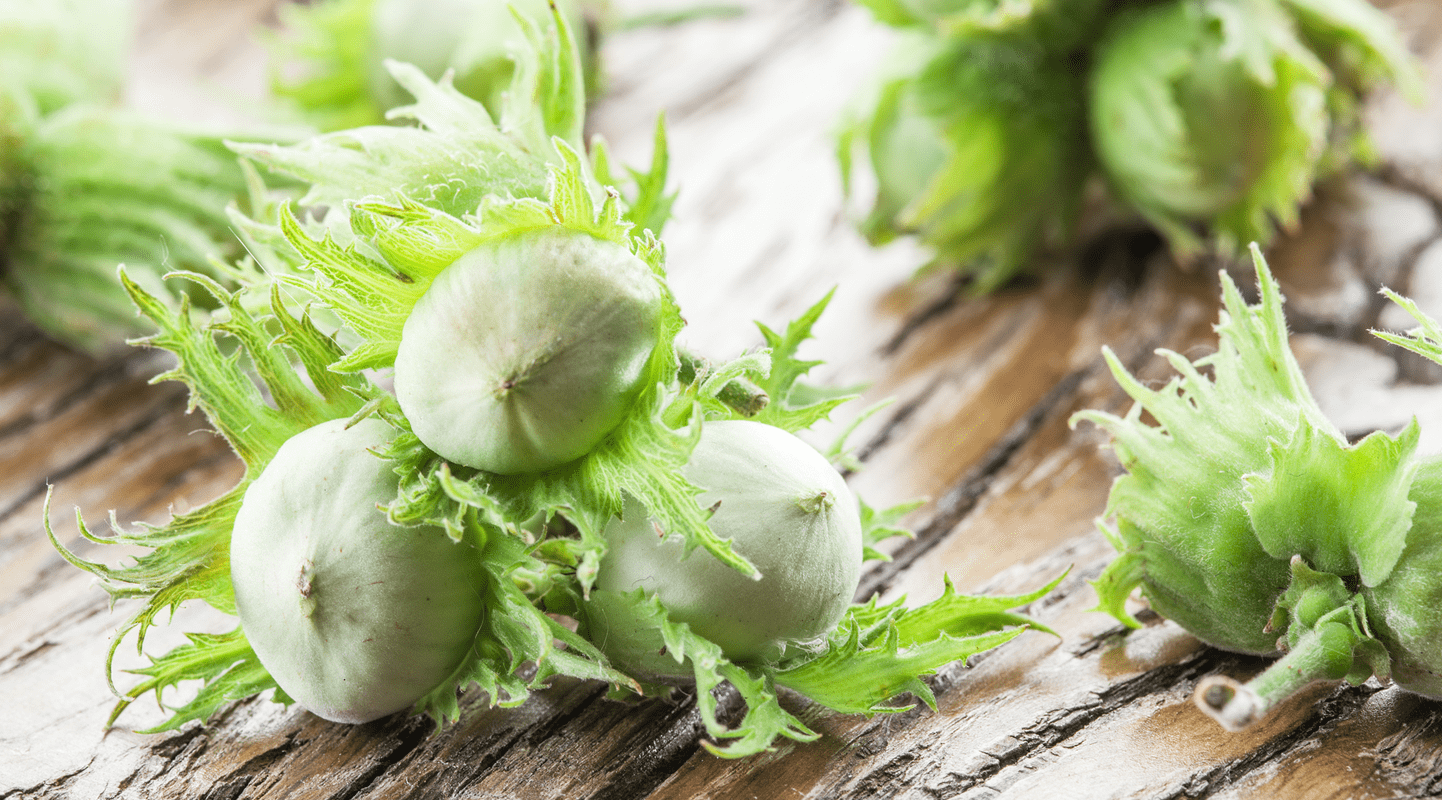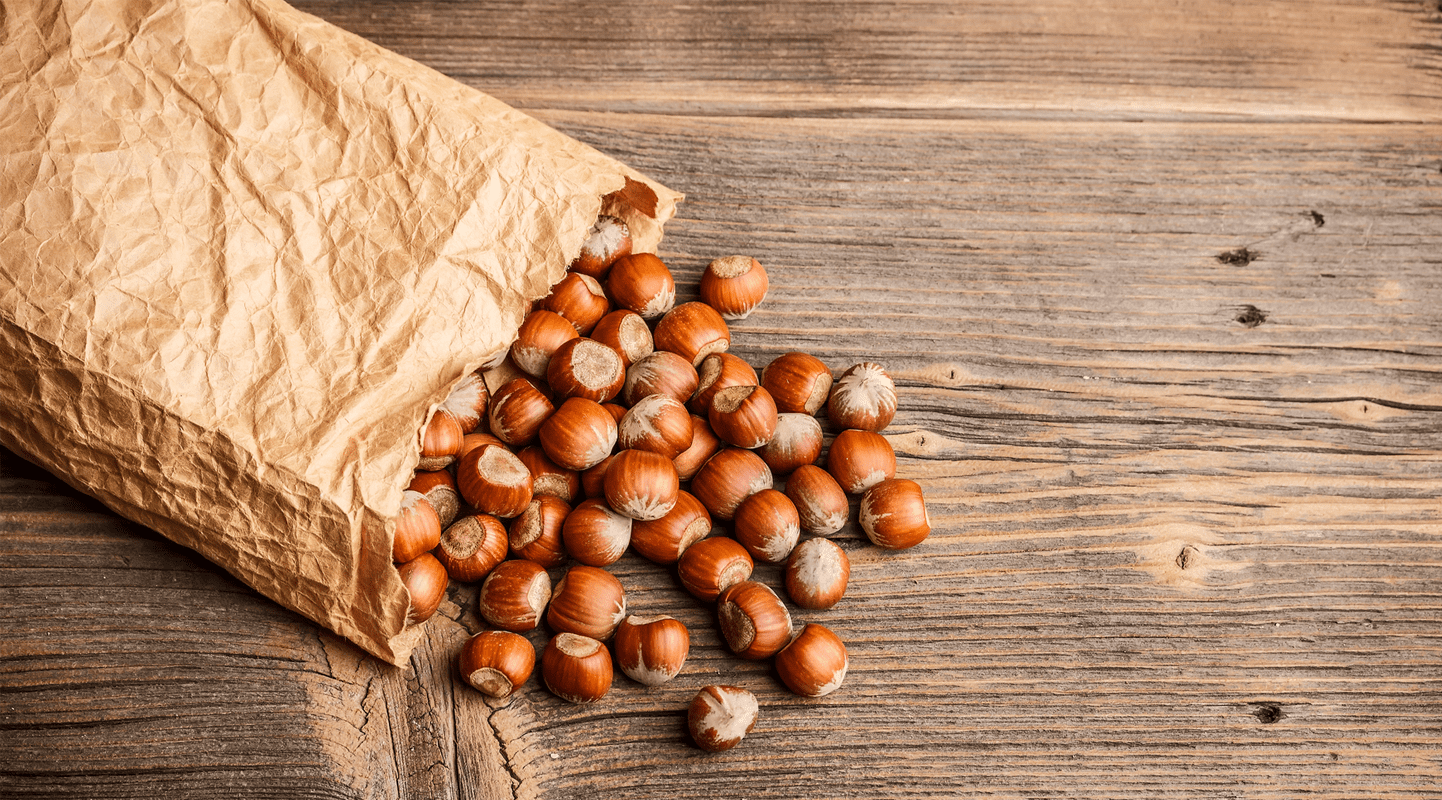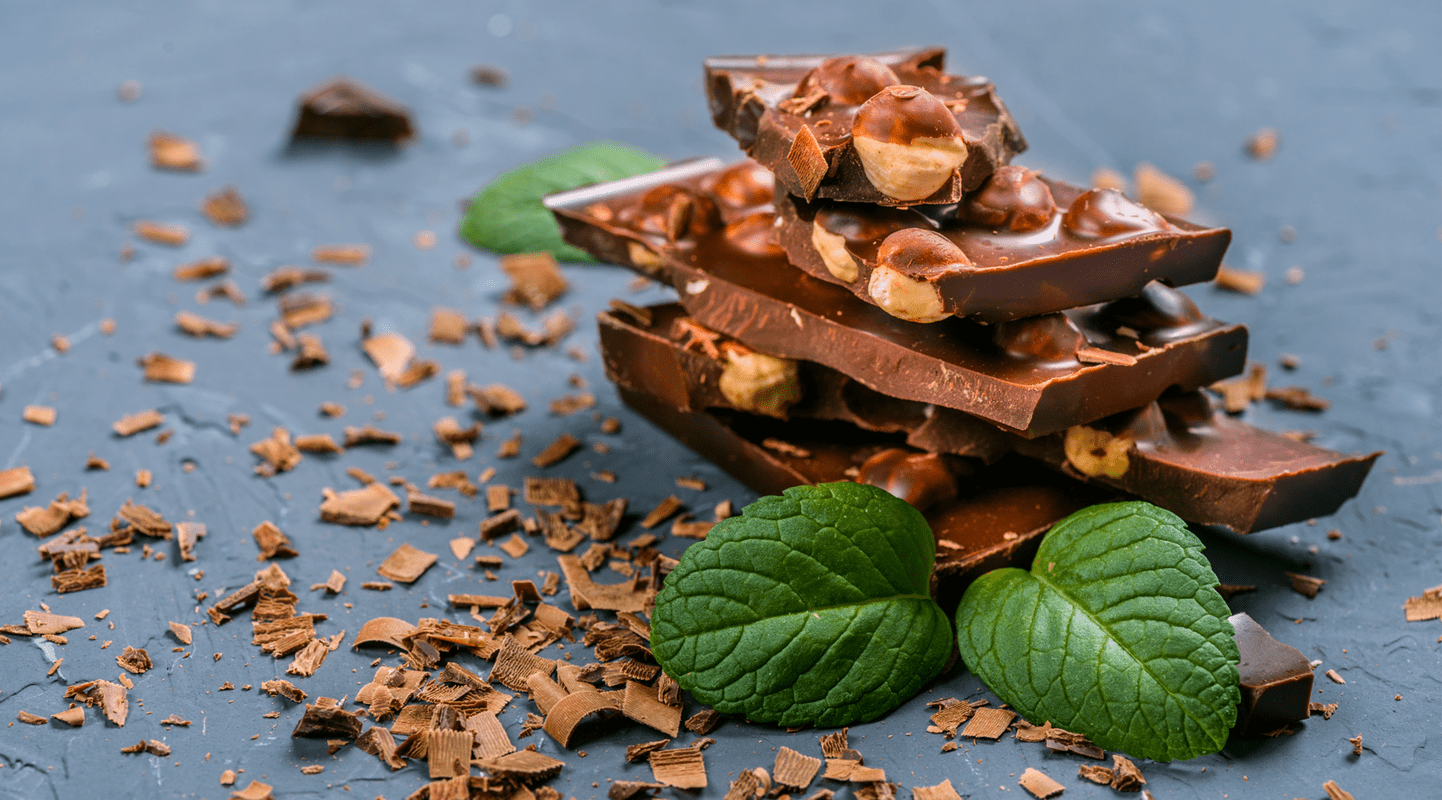Mmm. Simply irresistible… Creamy nut spreads on your toast in the morning or sampling your favourite chocolate packed with hazelnut pieces. It is easy to forget that hazelnuts come from a bush which grows close to home. Find out all you ever wanted to know about this much-loved nut…
The scientific name for the hazelnut is Corylus avellana. It can be traced back to the origin of the hazelnut, in the Italian province of “Avellana”. The region has been well known for the cultivation of hazelnuts for a long time. The hazelnut is the tasty seed from the fruit of the hazelnut bush and is rich in oils and fats. Part of the birch family, it can grow up to 5 metres in height. Hazelnuts are much loved for their sweet rounded flavour and their crunchy interior in a reddish brown outer shell. Speaking of shells – in order to get at the tasty nut with the delicate brown skin at the centre, some work is required beforehand with a nutcracker to break open the fruit’s woody shell.
What’s surprising is that the hazelnut is regarded as one of the oldest types of fruit indigenous to the UK. In 1995, evidence of large-scale Mesolithic nut processing, some 9,000 years old, was found in a midden pit on the island of Colonsay in Scotland. Back in the Stone Age, it was common in the mixed oak woodlands which were widespread at the time. Even then it was an important source of nutrition. And the hazelnut has been growing wild in Europe right through to the present day. It is now cultivated on a large-scale in Mediterranean countries and in Anatolia. The principal countries involved in its production are Turkey and Italy.

Hazelnuts grow on bushes and are cultivated predominantly in Turkey and in Italy
Types of hazelnuts

Hazelnuts can be divided into three groups according to their shape. Round hazelnuts are also called cobnuts. They are medium sized, easy to crack and very high quality. By contrast, pointed hazelnuts have a slightly elongated shape and the flower end is pointed or rounded. When cracking this type, the kernel is easily damaged which is why they are generally only sold with the shells. The long almond-shaped hazelnuts have the least impact on the hazelnut market. While they are certainly large, they are lower in quality and not suitable for cracking.
Hazelnuts are in fact one of the “true” nuts. What is quite surprising is that most foods described as nuts are actually not nuts at all, but fruits. The peanut, for example, is a legume. Also worth noting is that, in botanical terms, the strawberry is also a nut!
The season and the supply of hazelnuts
You may well have noticed that processed foods frequently contain hazelnuts. This is possible because the market is supplied all year round with hazelnuts. The harvesting season in Turkey is from the end of July to the beginning of August. In other regions it starts from September onwards.
The supply of hazelnuts comes in a wide range of different forms. The hazelnut kernels come whole, chopped or ground and are also popular in their shells during the winter. When purchasing, make sure that the shell is undamaged and that the nut feels heavy. Hazelnuts should be stored somewhere dark and cool – both shelled or unshelled. You can also keep the nuts for up to 6 months in the fridge or for up to a year in the freezer compartment. Once shelled, however, the nuts must be processed quickly.
Hard shells, soft kernels
When cracking the hazelnut shells, it’s best to use a nutcracker otherwise you might damage the kernel. If you want to turn the kernels into nut flour, a food chopper or food processor is best. Carry on mixing the nut flour and, after a few minutes, you’ll produce a nut purée which is ideal for perfecting sauces or enhancing desserts.
Beneath the firm woody shells, the hazelnut still has a brown skin surrounding the precious nut. The skin is also completely edible. However, if you do wish to remove the skin for aesthetic reasons, then roast the nuts in the oven at 200°C for 20 minutes. This not only intensifies the flavour, but the skin can also be simply rubbed off using a kitchen towel. Also worth mentioning is that, by mixing the nuts in a few tablespoons of oil and spices before roasting, you end up with something yummy to snack on in no time at all.
Valuable hazelnut oil

Hazelnuts are a popular snack as part of nut mixes or on their own. They’re great to use in fruit salads, with puddings or as part of sweet and savoury baked goods. However, the nuts mainly end up being processed in the form of hazelnut chocolate, hazelnut spread, nut purée, nut flour or hazelnut oil. The nut’s high fat content means that the hazelnut is ideal for producing oil. Mind you, only a very small proportion of the global production of hazelnuts is used to produce oil, and it is this which makes the oil so special. Hazelnut oil has only a very short shelf life but it is excellent as a tasty aromatic salad oil or when used with desserts.
The hazelnut as an allergen

You will have certainly met this labelling on a range of different packaging: “may contain traces of nuts”. So why should we expect nuts in food which would appear to be nut free? The labelling referred to is a voluntary declaration on the part of the manufacturer. In most cases this is due to the fact that multiple ingredients, and not just one single food item, are processed in large production facilities. Therefore, once nuts are being processed in a production facility, the manufacturers cover themselves with this information because (in the worst case scenario) unwanted cross-contamination may occur. These “traces” however are not defined in terms of quantity which means that the product may contain no traces at all or maybe an entire nut. Therefore, if you do actually suffer from an allergy, it’s best to ask the manufacturer directly what type of nuts are involved and whether this does, in fact, pose an acute risk to health.
The healthy snack between meals
Hazelnuts consist approximately of 63% fat and 14% protein. They contain high levels of vitamin B and E, as well as many minerals. The nuts are therefore clearly very high in energy which is why, despite them having nutritionally valuable contents, they should only be consumed in moderation. But it isn’t just the amount of fat, but also the composition of the fatty acids which needs to be taken into account. This really is quite impressive in the case of hazelnuts. They contain predominantly mono- and polyunsaturated fatty acids. Clinical studies have shown that nuts consumed in regular quantities can reduce the risk of suffering from bowel cancer. Hazelnuts are also said to contribute to lowering the risk of cardiovascular diseases. This effect is assumed to be based on the reduction in cholesterol levels. And it doesn’t just apply to the hazelnut. Walnuts, peanuts and almonds also boast positive nutritional values. It is best to combine a range of different types of nuts as part of a balanced diet.
Harvesting your own hazelnuts
Hazelnut trees grow in many different places and you can find one almost everywhere. In the autumn you can harvest hazelnuts yourself and dry them. It’s best to collect up the hazelnuts from the ground because this ensures the nuts are ripe. Remove any remaining leaves from the nuts and lay them out in a warm but well-ventilated room (for example, above a heat source like a radiator). This is a good place for the nuts to dry. Make sure that the nuts do not lie on top of one another and turn them regularly. This process takes around 6 weeks. In most cases the hazelnuts are then sufficiently well dried for them to be stored without a problem – and they will keep, by the way, longer with their shells than without.
Why not try one of our very own recipes containing hazelnuts?
Have you ever harvested and dried hazelnuts yourself? Or do you sometimes produce your own nut purée? Why not tell us about your experiences or share this article on Facebook or Twitter. We’re also on Instagram and Pinterest – feel free to get in touch!